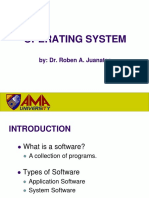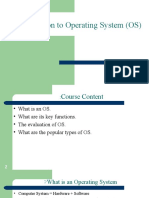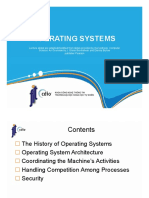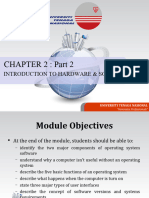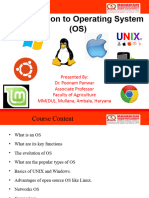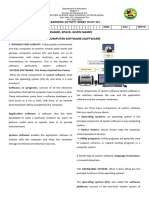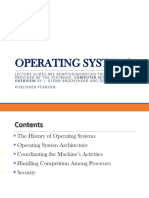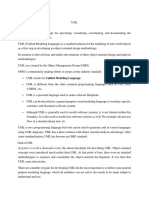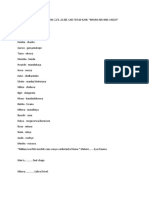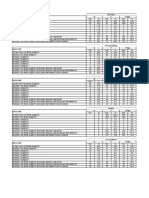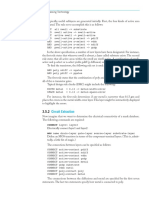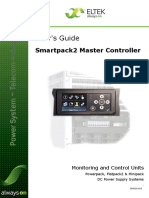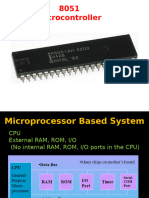OPERATING SYSTEMS (OS)
This is the software that provides an environment in which applications can run and
provides an interface between hardware and human operators.
OS refers to the extremely complex systems software that controls, manages and
coordinates a computer, provides the interface between the user, applications
software and the hardware.
The kernel is the core of the OS that manages memory and peripherals, maintain the
computer’s clock, starts applications, and assigns the computer’s resources such as
devices, programs, data and information.
When you turn on the computer
- The processor automatically begins executing the part of the OS’s start up system
(BIOS) located in ROM
- These instructions help load the OS from the hard disk drive/solid state drive into
RAM
- Then they pass control to the OS
Functions of operating system
Booting
- This is the process of loading an OS into a computer’s main memory
- In summary, it is the process of starting/restarting a computer
- Loading is accomplished by programs stored permanently in the computer’s
electronic circuitry
- Diagnostics routines test the main memory, the CPU, and other parts of the
system to make sure they are running properly (POST)
- Basic input/output system (BIOS) programs are copied to main memory and help
the computer interpret keyboard characters or transmit characters to the display
screen/secondary storage
- The boot program obtains OS usually from hard disk and loads it into the
computer’s main memory where it remains until you turn the computer off.
[kernel is memory resident]
- Boot disk is used to start up a computer
- Boot disk is created by copying your OS onto a CD
- Cold booting is a process of turning on a computer that has been completely
powered off.
- Warm booting is a process of using the OS to restart a computer
Provides user interface
- Interface is any part of an application or program that receives input or sends
output
- User interface is any portion of an application that interacts with the user
- User interface is the user controllable display screen that allows you to
communicate or interact with your computer
- The purpose of the interface is to translate inputs/outputs to or from the format
acceptable to the device, program or person on the other end of the interaction
- The look and feel of the user interface is what distinguishes one OS from
another, Windows 10 from Windows 11, Linux or MacOS X
� - The interface determines the ease of use of hardware and software
- Common types of user interface are Graphical User Interface (GUI), Command
Driven/Line Interface (CDI/CLI), menu driven interface and form-based interface
- Without user interface, no one could operate a computer system
CPU management
- Supervisor or kernel manages the CPU and remains in main memory while the
computer is running and directs other non-resident programs to perform tasks
that support application programs
- For example, when user enters a command to print a document, the OS will
select a printer (if there is more than one printer installed) and notify the
computer to begin executing instructions from the appropriate program (printer
driver)
Memory management (paging, segmentation, virtual memory)
- OS keeps track of locations within main memory where the programs and data
are stored.
- OS manages memory resources by loading programs into RAM and moving out of
RAM/memory the jobs that are no longer required. (swap portions of data and
programs between RAM and secondary storage (virtual memory))
- The capability (virtual memory) allows a computer to hold only the most
immediately needed data and programs within RAM
- This greatly expands memory capacity by its ready access to programs and data
on the hard disk
- OS also provides space for information generated by programs and transfer of
data from RAM to secondary storage
- OS allocates, or assigns data and instructions to an area of memory while they
are being processed
- NB: virtual memory is a concept in which the OS allocates a portion of a storage
medium, usually the hard disk, to function as additional RAM.
- The OS uses an area of the HD for virtual memory in which it swaps data,
information and instructions between memory and storage (paging).
- When an OS spends much of its time paging instead of executing applications
software, it is said to be thrashing. [computer freeze, HD LED blinks]
It controls how the computer responds to user’s requests
It controls how the hardware communicate with each other
It provides an environment in which application software can be executed
File management (creating, renaming, moving, editing files and folders)




